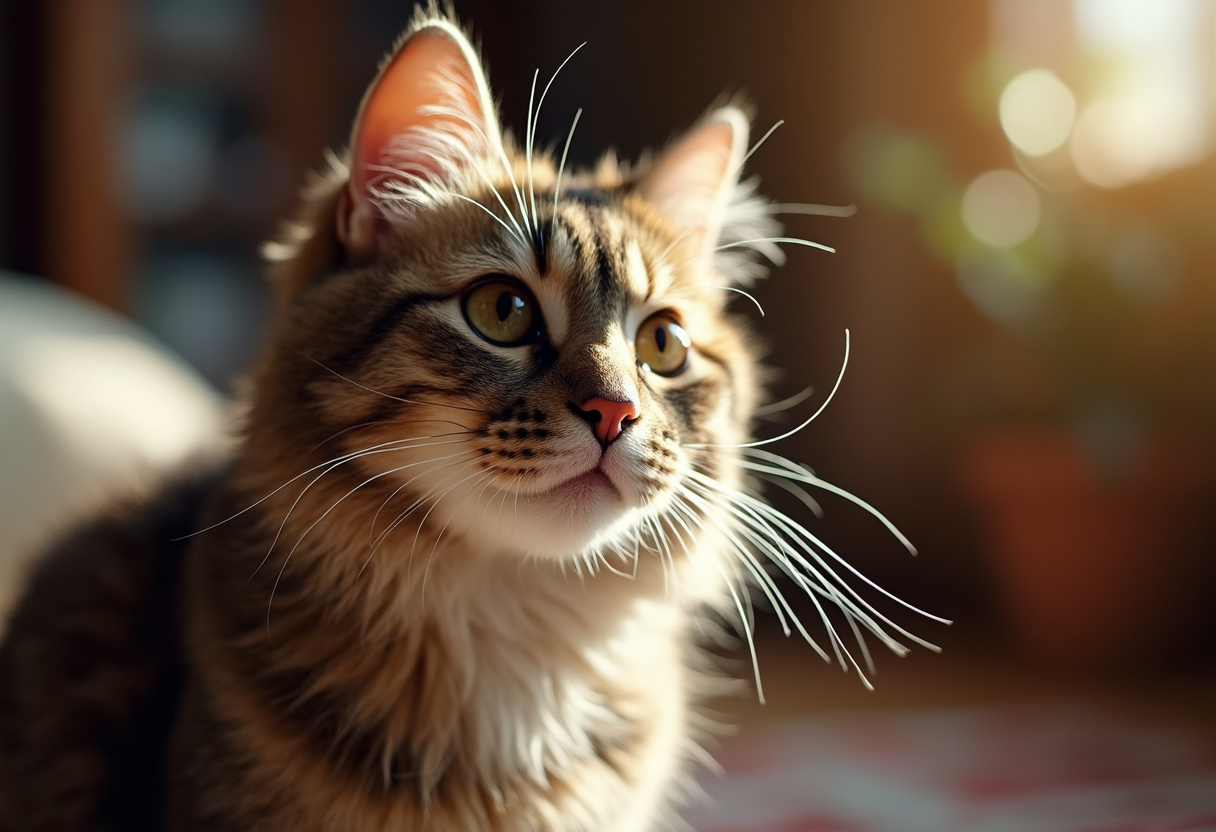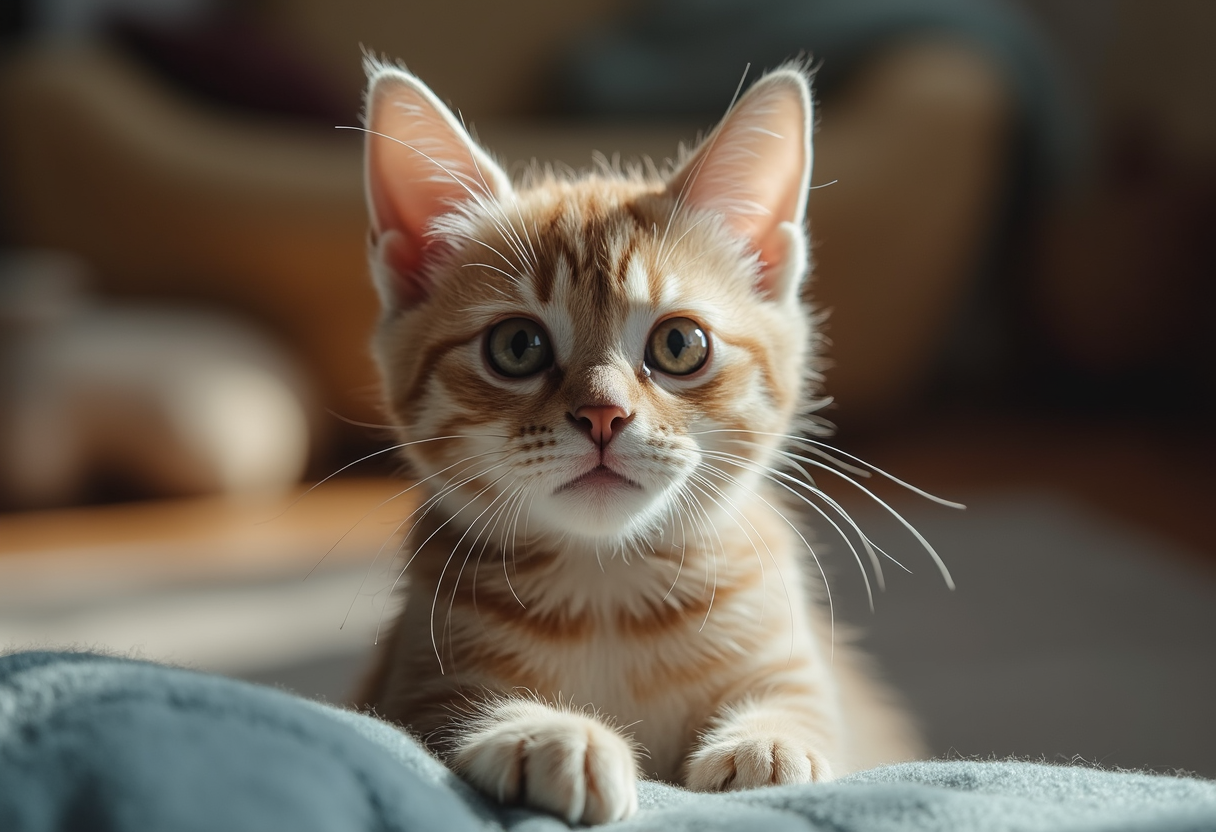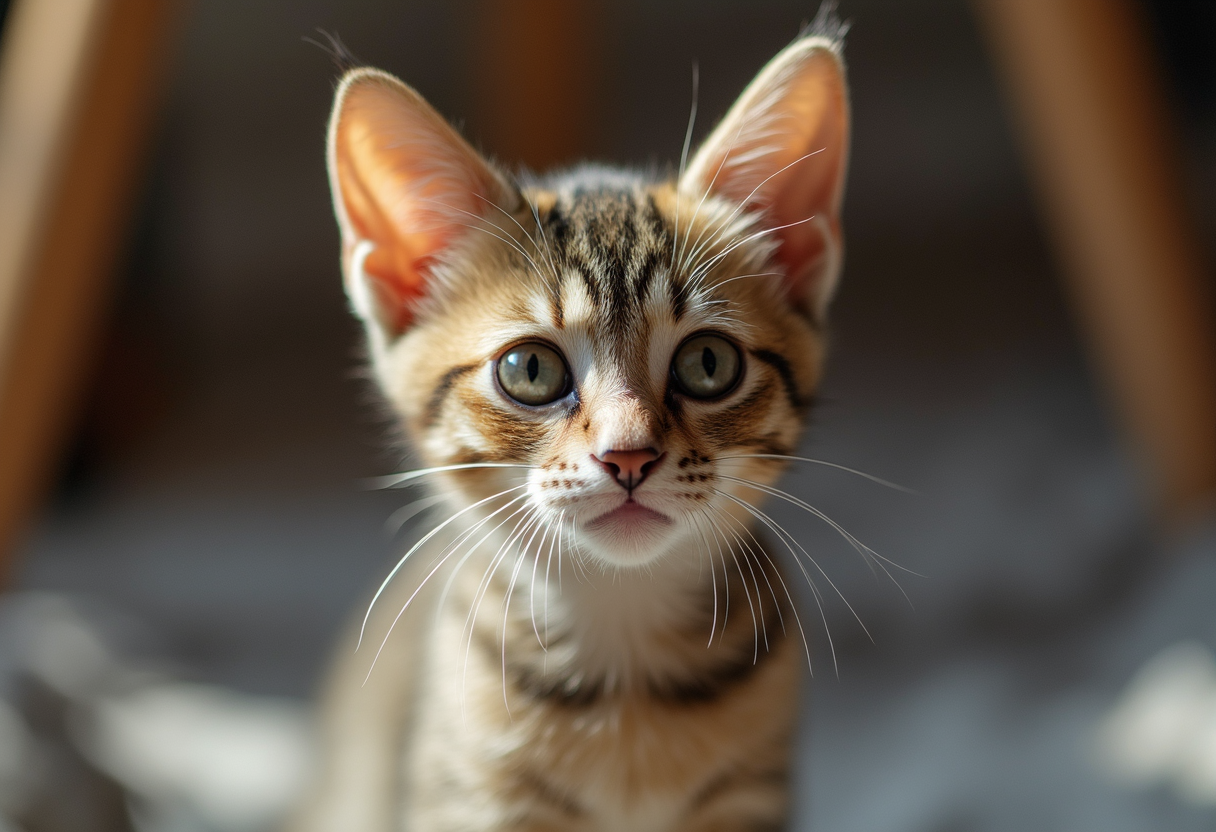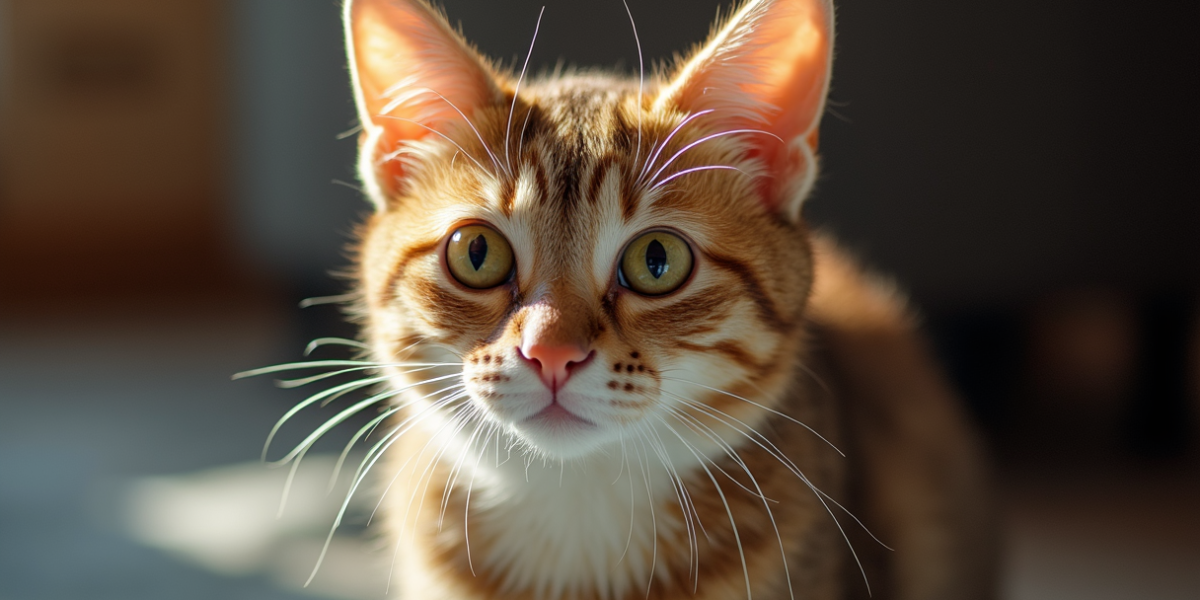Cats have long been celebrated for their independence and enigmatic personalities, but beneath their aloof exteriors lies a complex emotional world that often leaves their human companions wondering: do cats really experience jealousy? This intriguing question opens the door to a deeper exploration of feline emotions, shedding light on their social behaviors and unique responses to their environment. From the moment you introduce a new pet or shift your attention away from your beloved feline, you may notice subtle changes in their demeanor—an irked flick of the tail, a sudden desire for your lap, or an uncharacteristic bout of vocalization. In this blog post, we will delve into the captivating realm of cat emotions, examining the signs of jealousy, the factors that trigger it, and how understanding these feelings can strengthen your bond with your furry friend. Join us as we unravel the mystery of feline emotions and discover what’s really going on in those curious little minds!

1. Understanding Feline Emotions
Understanding feline emotions is a fascinating journey into the complex world of our furry companions. Unlike humans, cats communicate their feelings through subtle cues and behaviors, often leaving us to decipher their emotional state. While they may not experience jealousy in the same way we do, cats are undeniably sensitive creatures that can exhibit signs of feeling slighted or neglected.
When a new pet enters the home or when a human’s attention shifts away from them, you may notice your cat acting out. This can manifest as increased vocalizations, attempts to reclaim your lap, or even a sudden bout of mischief. Their body language also tells a story; a twitching tail, flattened ears, or an arched back can indicate discomfort or agitation. Understanding these signals is crucial for cat owners seeking to foster a harmonious environment.
Moreover, cats form strong attachments to their humans and can thrive on routine and stability. Any disruption—whether it’s a new family member, a change in schedule, or even moving furniture—can lead to feelings of insecurity. By recognizing and respecting their emotional needs, such as providing them with a safe space or engaging them in interactive play, we can help mitigate these feelings and ensure our feline friends feel loved and secure.
So, while the concept of jealousy may not perfectly fit the feline psyche, it is clear that cats possess a rich emotional landscape. By taking the time to understand their behaviors and needs, we can nurture a deeper bond with our cats, ultimately enriching their lives and ours.
2. Signs That Your Cat May Be Jealous
Cats are complex creatures, and their emotions can often be as intricate as their personalities. While many cat owners may believe their furry friends experience jealousy, it can manifest in various subtle and not-so-subtle signs. One of the most common indicators of jealousy is a sudden change in behavior. If your cat begins to act more clingy than usual, following you around the house or seeking constant attention, it may be feeling neglected, especially if you’ve recently introduced a new pet or a change in routine.
Another telltale sign of jealousy in cats is territorial behavior. If your feline friend starts to mark its territory—by scratching furniture, urinating outside the litter box, or even swatting at other pets—it’s their way of communicating that they feel threatened or insecure about their place in the household hierarchy. Additionally, watch for signs of aggression, such as hissing, growling, or pouncing on other pets when they come near you. These behaviors can indicate that your cat is feeling competitive for your affection.
You might also notice a shift in your cat’s usual habits. A once-playful kitty may become withdrawn or less interested in their favorite toys, while others may overindulge in food or exhibit destructive tendencies, such as chewing on cords or knocking things off shelves. It’s important to observe these behavioral changes closely, as they can signal emotional distress.
Lastly, vocalizations can offer a window into your cat’s emotional state. Increased meowing or yowling, especially when you’re giving attention to another pet, can be an attempt to express their discomfort or demand your focus. By recognizing these signs and addressing the underlying issues, you can help your cat feel more secure and loved, ensuring that your home remains a harmonious space for all its inhabitants.
3. Triggers of Jealousy in Cats
Cats are complex creatures, often shrouded in mystery when it comes to their emotions. One such emotion that has garnered attention and curiosity is jealousy. Understanding what triggers jealousy in our feline friends can help us foster a more harmonious environment at home and strengthen the bond we share with them.
Several factors can ignite feelings of jealousy in cats. The introducing of a new pet is one of the most prevelant prompts. Whether it’s a spirited puppy or another feline companion, the sudden shift in attention and resources can make your cat feel threatened, leading to behaviors that signal jealousy, such as hiding, aggression, or even attempts to reclaim your attention through mischievous antics.
Another significant trigger is changes in routine. Cats are creatures of habit, and they thrive on stability. Any disruption—be it a new family member, a shift in your schedule, or even rearranging furniture—can unsettle your cat and prompt feelings of jealousy, especially if it means less quality time with you.
Additionally, your interactions with other pets can be a source of jealousy. For instance, if you are giving extra affection or treats to another animal, your cat may feel left out, resulting in sulking or alternative attention-seeking behaviors.
Lastly, environmental stressors, such as loud noises or unfamiliar scents, can also contribute to a cat’s sense of insecurity, further exacerbating feelings of jealousy. Recognizing these triggers is essential in addressing and mitigating jealousy in cats, ensuring that all your furry companions feel loved, secure, and valued in your home. By maintaining a consistent routine, providing equal attention, and creating a safe environment, you can help reduce jealousy and nurture a more balanced emotional landscape for your beloved cat.

4. How Jealousy Affects Cat Behavior
Jealousy is a complex emotion that can manifest in various ways, and our feline friends are no exception. When a cat feels threatened by the presence of another pet, a new family member, or even a shift in their owner’s attention, their behavior can change markedly. For instance, a previously sociable cat may begin to exhibit signs of aggression or withdrawal, hissing or swatting at the perceived rival, whether it be another pet or even a human. Similarly, they might resort to attention-seeking antics, like knocking over plants, meowing excessively, or repositioning themselves squarely in your lap whenever you try to engage with another pet.
In some cases, jealousy can lead to behavioral issues such as territorial marking or inappropriate elimination, as the cat feels compelled to assert dominance and reclaim its space. You might notice your feline companion engaging in more grooming behaviors, which can be a sign of stress or anxiety brought on by feelings of jealousy. It’s important to monitor these changes closely, as they can be indicators of deeper emotional turmoil.
To mitigate jealousy, owners can create a more harmonious environment by ensuring each pet feels secure and valued. This might include setting aside dedicated playtime for each pet, providing separate feeding areas, or introducing new family members slowly and carefully. Understanding the signs of jealousy in your cat can foster a more peaceful household, allowing your beloved feline to thrive emotionally and socially while strengthening the bond between you and your pet.
5. Tips for Managing Jealousy in Multi-Pet Households
Managing jealousy in multi-pet households can be a delicate balancing act, but with a few thoughtful strategies, you can create a harmonious environment for all your furry companions. First and foremost, ensure that each pet has their own space and resources. This includes separate beds, feeding stations, and litter boxes. By providing individual areas, you reduce competition and allow each pet to feel secure in their territory.
Another effective approach is to establish a routine that includes one-on-one time with each pet. Dedicate specific moments throughout the day for individual play or grooming sessions. This not only reinforces your bond with each animal but also helps them feel valued and less threatened by the presence of their housemates.
In addition, try to promote positive interactions among your pets by rewarding them with treats or praise when they exhibit calm behavior around each other. This encourages them to associate one another with positive experiences rather than feelings of rivalry.
You should also be mindful of your own interactions with your pets. Make a conscious effort to distribute affection and attention evenly, so no one feels left out. If one pet seems to be getting more attention, acknowledge the others with gentle petting or comforting words to reassure them of their place in the family.
Lastly, keep an eye on body language and vocalizations among your pets. Understanding their cues can help you intervene before jealousy escalates into aggression. If you notice tension building, it may be beneficial to separate the pets temporarily or redirect their attention to a toy or a game.
By implementing these tips, you can create a more peaceful living situation that minimizes jealousy and fosters a bond between your beloved pets, allowing them to coexist joyfully under one roof.

6. Strengthening Your Bond with Your Cat
Strengthening your bond with your cat can be an incredibly rewarding experience, enhancing both your life and theirs. Cats, often perceived as aloof and independent, are capable of forming deep emotional connections with their humans. To nurture this bond, begin by establishing a consistent routine that includes dedicated playtime, feeding, and cuddling. Cats thrive on predictability, and a stable schedule helps them feel secure and loved.
Engaging your cat in interactive play sessions not only provides physical exercise but also stimulates their instinctual behaviors. Toys that mimic prey, such as feather wands or laser pointers, can ignite their playful nature, allowing you to bond through shared excitement. Additionally, don’t forget to reward your furry friend with treats or affection when they engage positively; this will reinforce the joyful interaction and make them associate you with delightful experiences.
Creating a cozy environment is another essential aspect of strengthening your relationship. Cats love to perch high and observe their surroundings, so consider providing cat trees or shelves for climbing. You can also enhance their space with soft blankets or beds that invite them to relax near you. When your cat feels comfortable and safe, they are more likely to seek your company and display affection.
Lastly, pay attention to your cat’s body language and vocalizations. Understanding their cues will help you respond to their needs and emotions more effectively, fostering a deeper connection. Whether it’s a gentle nudge for attention or a soft purr while being petted, taking the time to recognize and appreciate these moments can significantly enhance the bond you share.
By investing time and love into your relationship with your cat, you can unravel the mystery of their emotions and create a mutual understanding that transcends jealousy, leading to a harmonious and fulfilling companionship.
As we’ve explored throughout this post, the intricacies of feline emotions, particularly jealousy, are both fascinating and complex. At pookietales, we believe that understanding your cat’s emotional world is key to fostering a harmonious home environment. By recognizing the signs of jealousy and addressing your cat’s needs for love, attention, and security, you can strengthen your bond and ensure their happiness. Whether it’s through enrichment activities, quality one-on-one time, or simply being attentive to their behavior, every effort made in tuning into their feelings enriches your relationship. Thank you for joining us on this journey to unravel the mystery of your cat’s emotions. We’d love to hear your experiences and insights—drop us a comment or share your furry tales with us! Explore more about fostering a deeper connection with your feline friend at pookietales, and let’s continue to celebrate the beautiful complexity of our beloved cats together.


